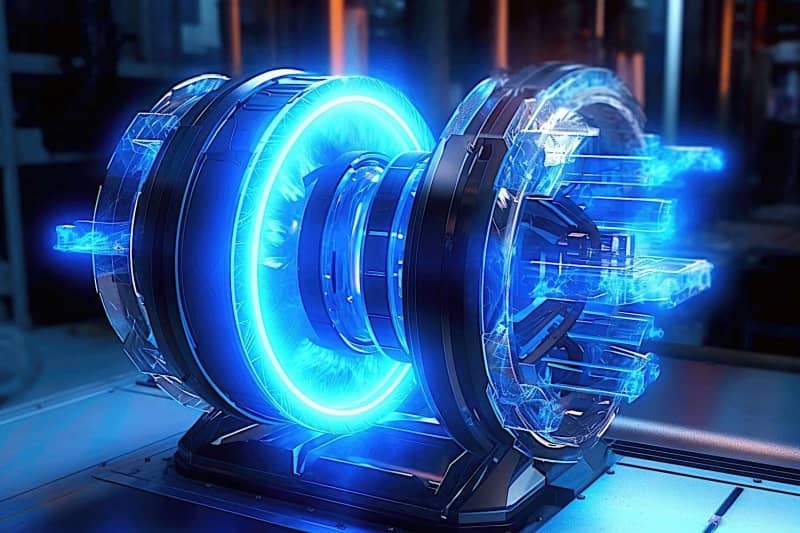
The dream of traveling to distant stars and planets is one step closer to reality with advancements in propulsion technology. As humanity looks to explore beyond our solar system, traditional rocket propulsion methods are proving inadequate for the vast distances involved. Advanced propulsion systems are emerging as potential solutions to overcome the limitations of conventional space travel, offering promises of faster and more efficient journeys through space.
Current propulsion technologies rely on chemical rockets, which, while effective for reaching low Earth orbit, face significant challenges when tasked with interstellar travel. The need for more powerful, efficient, and sustainable propulsion methods has driven research into alternative technologies that could propel spacecraft at unprecedented speeds. These innovations aim to reduce travel time and make space exploration more feasible and practical.
In this exploration of advanced propulsion systems, we’ll delve into several groundbreaking technologies that could redefine the future of space travel. From theoretical concepts to experimental prototypes, these systems represent the cutting edge of aerospace engineering and physics.
The Next Generation of Propulsion Technologies
One of the most exciting developments in advanced propulsion is the concept of ion propulsion. Unlike chemical rockets, which expel mass to generate thrust, ion engines use electrical energy to accelerate ions and produce thrust. This method is highly efficient and provides a continuous, low-thrust propulsion that can sustain long-duration missions. Ion propulsion has already been used successfully in missions such as NASA’s Dawn spacecraft, demonstrating its capability for deep space exploration.
Another promising technology is the nuclear thermal propulsion (NTP) system. NTP relies on a nuclear reactor to heat a propellant, such as hydrogen, which is then expelled to generate thrust. This method offers a significant increase in efficiency and specific impulse compared to chemical rockets. The high thrust-to-weight ratio makes NTP a strong candidate for missions to Mars and beyond, potentially reducing travel time and improving mission feasibility.
The concept of the nuclear electric propulsion (NEP) system extends the capabilities of nuclear power by using it to generate electricity, which then powers an electric propulsion system such as an ion thruster. NEP systems combine the high energy density of nuclear reactors with the efficiency of electric propulsion, providing a powerful and long-duration thrust for deep space missions.
Theoretical Propulsion Concepts with Unprecedented Potential
While current technologies offer significant improvements, theoretical propulsion concepts push the boundaries even further. One such concept is the warp drive, a speculative idea inspired by Einstein’s theory of relativity. The warp drive would theoretically allow a spacecraft to bypass the speed of light by contracting space in front of it and expanding it behind. Although still in the realm of theoretical physics, the warp drive concept offers a tantalizing glimpse into the possibilities of near-instantaneous space travel.
Similarly, the concept of a solar sail leverages the pressure of sunlight for propulsion. By deploying large, reflective sails, a spacecraft can harness the momentum of photons from the sun. Solar sails have the potential for continuous acceleration and could enable missions to distant stars within practical timeframes. The ongoing development of solar sail technology aims to demonstrate its effectiveness in real-world missions.
Another fascinating theoretical propulsion system is the antimatter engine. Antimatter reactions produce enormous amounts of energy, making them an ideal candidate for high-efficiency propulsion. However, the production and storage of antimatter remain significant challenges. Advances in antimatter research could one day provide the means for extremely fast space travel and exploration.
Future Prospects and Applications of Advanced Propulsion Systems
As research continues, advanced propulsion systems hold the potential to transform space exploration. The development and refinement of these technologies are crucial for enabling human missions to Mars, asteroids, and potentially even other star systems. Each propulsion method offers unique advantages, from increased efficiency and speed to the ability to sustain long-duration missions.
The integration of advanced propulsion systems into future spacecraft will require overcoming engineering challenges and ensuring reliability. Testing and validation will play a key role in bringing these technologies from theoretical models to practical applications. Successful implementation of these systems could mark the beginning of a new era in space exploration, where missions to the outer reaches of our solar system and beyond become feasible.
The pursuit of faster and more efficient propulsion technologies represents a major leap forward in our quest to explore the cosmos. As scientists and engineers continue to push the boundaries of what is possible, the next generations of spacecraft could open new frontiers for humanity and expand our understanding of the universe.
Share this:
One thought on “Advanced Propulsion Systems for Faster and More Efficient Space Travel”
Comments are closed.


Ion engines and nuclear thermal rockets have huge potential to revolutionize space travel. Cutting down travel times opens up new possibilities for exploring our solar system. It will be interesting to see how these technologies advance and what new frontiers they unlock.